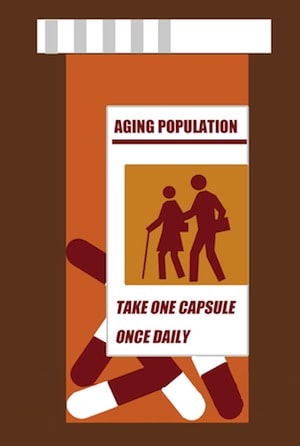One of the most pressing issues in the health world today is the continued health of an aging population. In Canada, over 18.5 per cent of the population will be over 65 years old in seven years; in 2011, that demographic only made up 14.4 per cent of the population.

NANCY JI/THE VARSITY
This shift in population will have profound socio-economic effects. Researchers today are confronting the topics of neurodegenerative diseases, geriatric care, and social mechanisms of aging in order to adequately prepare.
On January 17–18, the Laboratory Medicine & Pathobiology Student Union, together with the Health Studies Students’ Union, hosted the University of Toronto Conference on the Aging Population (UTCAP). UTCAP aimed to bridge biomedical and social science research in order to create a comprehensive picture of the complex issues surrounding aging in contemporary society.
The Varsity spoke with Dr. JoAnne McLaurin about her research on the aging and Alzheimer’s disease. She was a speaker at UTCAP, and teaches in U of T’s Department of Laboratory Medicine and Pathobiology.
The Varsity: In layperson’s terms, what is the significance of your research for the health of the aging population?
JoAnne McLaurin: My research focuses on understanding the disease mechanisms that lead to Alzheimer’s disease and to develop treatment strategies to address these processes.
We are presently attempting to examine combination therapeutic strategies that will slow or prevent the progression of disease so that we can increase the quality of life for Alzheimer’s disease patients.
For example, my laboratory has developed a small molecule therapy called scyllo-inositol, which is presently being tested in patients for the treatment of the neuropsychiatric symptoms associated with Alzheimer’s disease in patients with mild to moderate Alzheimer’s disease and Down’s syndrome.
This is an important indication that, if successful, will increase the quality of life for both the patient and their caregivers.
We are using this compound with other treatment strategies to try to decrease the cognitive decline that is seen in disease progression. Lastly, we are also addressing the interaction between stroke and Alzheimer’s disease, in order to understand how these two pathologies contribute to loss of cognition in the aging population.
TV: As you mentioned in your speech, neurodegenerative disease is a complex topic with many unanswered questions. In your opinion, what are the biggest issues in this field today?
JM: The biggest issues in neurodegenerative diseases as a whole is determining the causes of sporadic disease, of which we understand some risk factors, but not causal links. Once we have identified these risk factors and causes, the next challenge will be to understand how these factors lead to disease and to develop drugs to prevent and/or treat disease based on the particular pathway that is unique to each individual.
TV: What are the goals in addressing the multidisciplinary issues surrounding aging and how can they be achieved?
JM: The goals of ageing research is to educate the public to the effects of lifestyle choices in middle age on late age quality of life. These factors include hypertension, exercise, diabetes, and body weight; all these factors are addressable with either drugs presently on the market or by adopting healthy lifestyle choices.

